Service Desk Outsourcing provides organizations with specialized support, helping to improve efficiency and customer satisfaction. It involves delegating service desk operations to external service providers.
The top 5 Service Desk Outsourcing solutions are Capgemini Outsourced Digital Workplace, Unisys Service Desk Outsourcing, Dell IT Service Desk, Atos Service Desk Outsourcing and Stefanini Digital Workplace And Infrastructure, as ranked by PeerSpot users in December 2025. Capgemini Outsourced Digital Workplace received the highest rating of 0.0 among the leaders and holds the largest mind share of 9.2%. Stefanini Digital Workplace And Infrastructure is the most popular solution in terms of searches by peers.
Service Desk Outsourcing allows companies to focus on their core business activities while ensuring their IT support is handled by experts. Providers offer round-the-clock support, ensuring minimal downtime and quick issue resolution. This solution is particularly valuable for companies that do not have the resources to maintain an in-house service desk team.
What are some critical features?Service Desk Outsourcing is commonly implemented in industries like finance, healthcare, and retail, where efficient IT support is critical for daily operations. These industries benefit from the expertise and scalability that outsourced service desks provide, ensuring minimal disruption to their services.
This service is helpful for organizations seeking to improve their IT support quality without the burden of managing an in-house team, allowing them to allocate resources towards growth and innovation.
| Product | Market Share (%) |
|---|---|
| Capgemini Outsourced Digital Workplace | 9.2% |
| Unisys Service Desk Outsourcing | 7.6% |
| Dell IT Service Desk | 6.3% |
| Other | 76.9% |


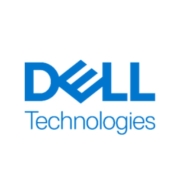
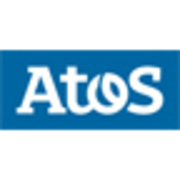


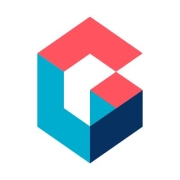



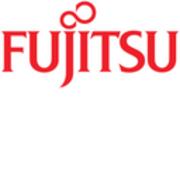



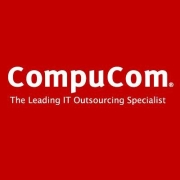
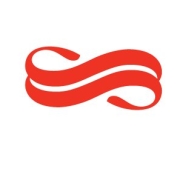


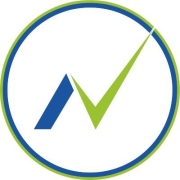

Service Desk Outsourcing involves delegating the responsibility of providing support services to a third-party provider. Service Desk Outsourcing tools are essential software solutions that help manage and streamline these support services, ensuring efficiency, responsiveness, and customer satisfaction.
Several types of Service Desk Outsourcing tools are commonly used in the industry, each catering to different aspects of service management:
1. Ticketing Systems: Ticketing systems are fundamental to service desks. These tools manage customer inquiries, problems, and requests by assigning unique ticket numbers. They help track the status of each issue, ensure timely resolution, and maintain records for future reference. Popular ticketing tools include Zendesk, Jira Service Management, and ServiceNow.
2. Knowledge Management Systems: Knowledge management systems store and organize information, making it easily accessible to both service desk agents and customers. These tools provide databases of frequently asked questions, troubleshooting guides, and instructional articles, facilitating self-service and reducing the volume of support requests. Examples include Confluence, Guru, and Freshservice.
3. Customer Relationship Management (CRM) Systems: CRM systems are designed to manage interactions with customers. They help service desk teams keep track of customer details, communication history, and interaction patterns, enabling personalized and efficient service. Salesforce, HubSpot, and Zoho CRM are prominent tools in this category.
4. Remote Support Tools: Remote support tools allow service desk agents to access and control a customer’s device to resolve issues directly. These tools are crucial for troubleshooting technical problems that cannot be solved through verbal instructions alone. TeamViewer, AnyDesk, and LogMeIn are widely used remote support applications.
5. Reporting and Analytics Tools: These tools provide insights into the performance of the service desk by generating reports and analyzing metrics such as response time, resolution time, customer satisfaction, and ticket volume. This data helps in identifying areas for improvement and optimizing service delivery. Power BI, Tableau, and Splunk are commonly utilized for this purpose.
6. Automated Chatbots and Virtual Assistants: With advancements in AI, chatbots and virtual assistants are becoming integral to service desks. They handle basic queries, provide instant responses, and escalate more complex issues to human agents, enhancing efficiency and availability. Tools like ChatBot, Drift, and Intercom are popular choices.
Service Desk Outsourcing tools encompass a range of solutions that collectively enhance the efficiency and effectiveness of support services. By utilizing these tools, organizations can provide high-quality support, improve customer satisfaction, and focus on their core business operations.
Service Desk Outsourcing tools streamline the process of handling IT support tasks by leveraging external service providers. These tools enhance operational efficiency, reduce costs, and ensure consistent service quality. They primarily involve a combination of software platforms, methodologies, and best practices designed to handle various aspects of IT support.
Here's how they work:
Incident Management: Users report incidents via phone, email, or a self-service portal. The tool automatically logs incidents, assigning a unique ticket number for tracking. It categorizes and prioritizes incidents based on predefined rules. Alerts and notifications are sent to the appropriate support teams.
Service Request Management: Service Desk Outsourcing handles standard service requests, such as password resets or hardware requests. Predefined templates streamline the request submission process. Automatic routing to relevant departments or technicians helps with management.
Knowledge Management: Tools offer centralized repository of frequently asked questions (FAQs), solutions, and troubleshooting guides. AI-driven search capabilities help users and technicians find relevant information quickly. Continuous updating and improvement of knowledge articles based on feedback.
Service Level Management: Service Desk Outsourcing tracks performance against agreed Service Level Agreements (SLAs). Escalation protocols for incidents or requests nearing SLA breaches. Real-time monitoring and reporting on SLA compliance.
Automation and AI: Machine learning and AI for predictive analytics is used. Automated ticket routing can be based on historical data and patterns. Chatbots are available for handling routine inquiries and providing first-level support.
Integration: Seamless integration with other IT Service Management (ITSM) tools and enterprise systems is standard. APIs enable data exchange and process synchronization across platforms.
Reporting and Analytics: Dashboards provide real-time visibility into service desk performance. Users can customize reports for insights into incident trends, root causes, and team productivity. Predictive analytics are available to identify potential issues before they escalate.
User Experience: Intuitive user interfaces are available for both end-users and support staff. Self-service portals help users track their own tickets and check request statuses. Users also have multichannel accessibility (web, mobile, email, phone).
Service Desk Outsourcing Tools ensure efficient handling of IT support operations, emphasizing quick resolution, consistent service quality, and cost-effectiveness.
Service Desk Outsourcing tools provide numerous benefits that enhance operational efficiency, reduce costs, and improve service quality. These advantages are particularly valuable for organizations aiming to streamline their IT support and customer service operations.
Key benefits include:
Cost Efficiency: Service Desk Outsourcing reduces overhead costs associated with maintaining an in-house service desk team. Minimizes expenses for recruitment, training, and employee benefits. Tools offer scalable pricing models, enabling organizations to pay only for required services.
Enhanced Focus on Core Business Activities: Tools allow internal teams to concentrate on strategic initiatives rather than mundane support tasks. They help free up resources that can be allocated to more critical business functions.
Access to Advanced Technologies and Expertise: Users leverage specialized knowledge and skills of seasoned professionals in the service desk domain. Tools provide access to state-of-the-art tools and technologies without additional investments.
Improved Service Levels: Ensures 24/7 support availability, enhancing user satisfaction and uptime. Utilizes standardized processes and best practices to promote consistent service delivery. Service Desk Outsourcing offers Service Level Agreements (SLAs) that guarantee response and resolution times.
Operational Flexibility: Platforms adapt easily to changing business requirements and fluctuating support demands. They provide options to scale services up or down based on current needs.
Enhanced Data Management and Security: They employ robust data protection measures, ensuring compliance with industry standards and regulations. Advanced monitoring and reporting tools are implemented to track performance and identify areas for improvement.
Performance Optimization: Tools use sophisticated analytics to measure key performance indicators (KPIs) and optimize processes. They help provide insights through regular reporting, aiding in strategic decision-making.
Service Desk Outsourcing Tools offer an efficient, cost-effective solution for managing IT support and customer service requirements. By leveraging these tools, organizations can enhance productivity, ensure continuous improvement, and maintain a competitive edge in their respective markets.